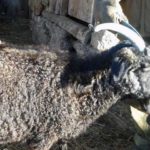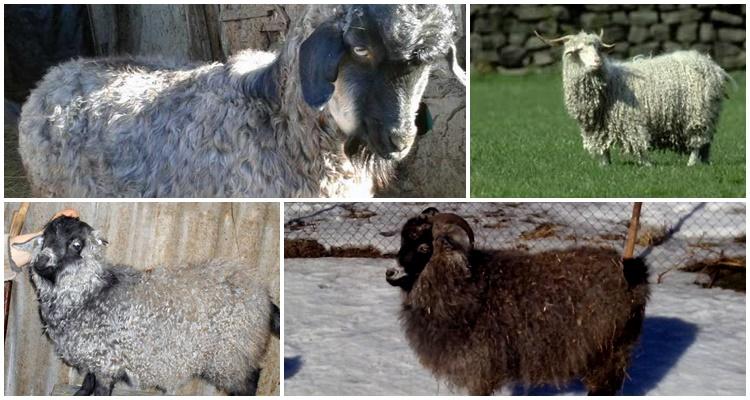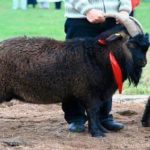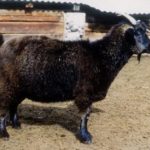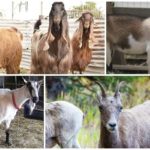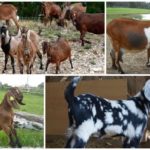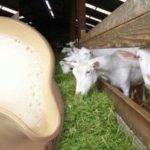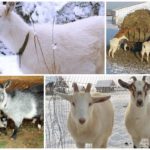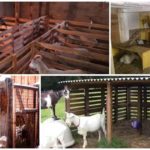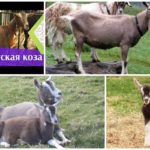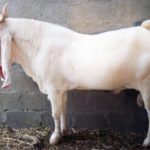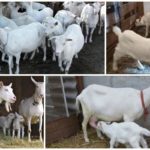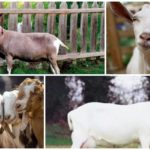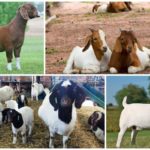Downy goat breeds are bred and bred to produce primarily down, rather than meat and milk. In popularity they are inferior to meat and dairy varieties, but their products are in certain demand. Let's consider the description and characteristics of the Don goat breed, how to keep and feed the animals, how to breed them at home, and how to treat diseases.
Description and characteristics of Don goats
The origin of the breed is not precisely established.It is believed that coarse-haired local Don and Turkish goats took part in the breeding. At the end of the 19th century, Angora blood was infused into the breed. Nowadays, Don goats are bred in the regions of the Don and Volga rivers, mainly on breeding farms in the Volgograd region.
Representatives of the breed are medium in size, strongly built, with a rounded body. Males are decorated with large horns and a thick beard. Color: black, gray and white. The weight of the goats is 70 kg, the goats weigh 2 times less. The weight of kids at birth is 2 kg, at weaning – 14 kg. By 1.5 years, the weight of young animals reaches 27 kg, by 2.5 years – 30 kg. Females give birth, on average, to 1.5 kids per lamb. The downy productivity of Don goats depends on the individual characteristics of the animals. The spread of the “harvest” is large - more than 1 kg (330-1430 g).
The structure of the down of the Don breed differs depending on the season. In autumn and winter in animals it is thick, gray-brown or gray, and the guard hairs are short. After the spring molt, goats are covered with coarse hair. Milk productivity of females of the Pridon breed is 130-140 liters in 5 months. After weaning, the kids can be milked for another 6-7 weeks. Goat milk fat content – 4.6% (maximum – 8.2%). The slaughter yield of meat is 60%, but meat productivity is low.
Pros and cons of the breed
If you do not take into account that it is impossible to get a lot of milk and meat from Don goats, this breed can be considered a good option for breeding in private farms to obtain high-quality fluff.
Conditions of detention and care
Don goats are known for their unpretentiousness; in summer they can live on pasture, if the weather is good. To spend the night, they need to be returned to the goat shed. The room where goats live should be warm, protected from wind and drafts. In winter, you need to turn on the lights in it in the mornings and evenings, bringing the daily lighting to 10-12 hours. The goat's rue needs to be ventilated daily or the ventilation system must be turned on.
It is advisable to change the litter every day, but at least once a month. To prevent disease and death of livestock, it is necessary to disinfect the premises, equipment and feeders of each individual. Treatment frequency: 1 time per week.
Down from goats is collected starting in late spring. The time for shearing is determined by the appearance of the animals. In the largest of them, the fur begins to fall off, this is a sign of beginning molting. Goats are combed several times a season - with an interval of 2-3 weeks.
A special comb is suitable for combing, which does not tangle fluff and wool. The animals are combed starting from the neck, then moving to the chest, shoulder blades, sides and ending with the hind legs.
At one time, you can cut 0.5-2 kg of fluff and wool from one animal. 80-90% of the raw material consists of fluff, wool is chosen from it.High-quality fluff in large quantities is produced by white-colored individuals near the Don, which are influenced by Angora ancestors. However, white animals have lower meat and milk productivity.
What to feed the animals?
Goat kids are fed milk for up to 6 months. At two, they are gradually given the food they will eat as adults. This is grass, leaves and branches of trees, hay, vegetables, root crops. Purebred animals love to graze in open spaces, so it is necessary to keep them grazing as much as possible.
Breeding Features
To obtain individuals with purebred characteristics, you need to cross purebred bucks and goats. If necessary, representatives of downy varieties are allowed, but not dairy or meat varieties. When crossed with meat and dairy breeds, the quality of the down decreases, it becomes coarser, and the volume decreases.
Diseases and methods of their treatment
Don goats are seriously ill with smallpox. The rashes are localized on the head, legs, udder, and tail. With a complex course of the disease, damage to the joints, eyes, exhaustion are observed, and abortions occur in the uterus. In goat kids, the rash is located on the mucous membranes of the mouth, respiratory tract and gastrointestinal tract. Smallpox in animals lasts 3-4 weeks. Diagnosis is made by blood tests and clinical signs. No treatment has been developed. The main control measures are preventive.
In addition to smallpox, goats of this breed can suffer from infectious, colds and gastrointestinal diseases. These are the consequences of poor living conditions and insufficiently balanced feeding. Such diseases must be treated and prevented by following the rules of nutrition and keeping farm animals.
The Pridonskaya breed is old and at the same time promising.Despite the small number of purebred livestock, purebred individuals can be purchased for breeding and keeping in private households. The main products are excellent white and gray fluff, soft and light. In addition, these goats can provide nutritious milk and meat.



